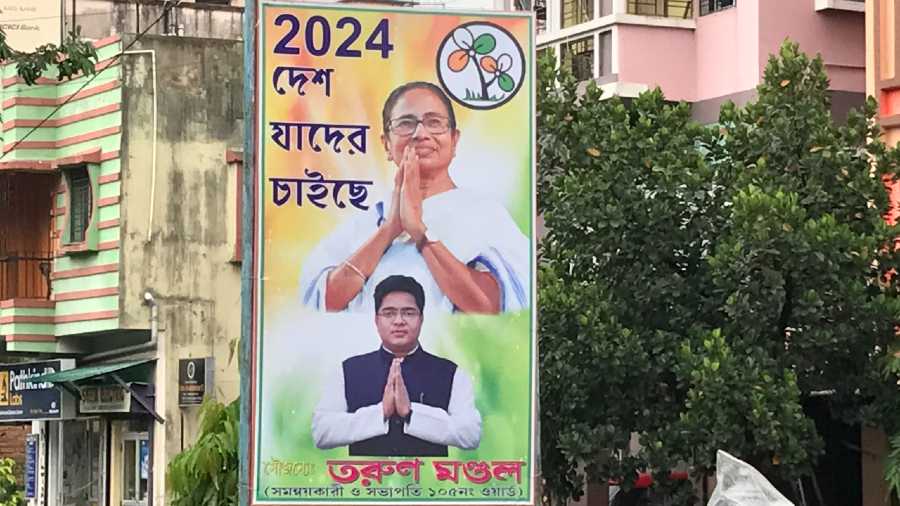Mamata Banerjee’s intent is now splashed all over Calcutta. “Desh Jaader Chaichhe (whom the country wants)” is the tagline, with 2024 scribbled on top of posters as Mamata prepares to take the next big leap in national politics, a much-cherished goal of the Bengal chief minister that has eluded her since 2014 when she first went public with her national dream.
The new campaign line has been revealed days before Mamata takes the dais on Wednesday, July 21, for a virtual address to her party leaders and workers to commemorate the death of 13 Youth Congress workers in police firing in 1993.
“She will reveal her vision and her plan just 48 hours from now. After the 2021 Bengal Assembly polls, it is very much clear that she is the only leader in the country who can stop Narendra Modi and Amit Shah,” said a Trinamul Rajya Sabha MP.
The virtual rally of July 21 is scheduled to be streamed to other states as well. There are plans afoot to show the rally on big screens across Gujarat, the home turf of Modi and Shah, along with Delhi, Uttar Pradesh, Tripura, Assam and some other places.
Like last year, Mamata will address party workers from her office at 30B Harish Chatterjee Street, her
residence from where she has pitched most of her political battles all her life.
“There is tremendous interest around Didi’s political plan. There is an Opposition space in states like Gujarat and Didi wants to get that,” said a Trinamul source.
The “Desh Jaader Chaichhe” campaign—with images of Mamata and Abhishek Banerjee-- is a step forward from the catchline that brought Mamata back in the game in Bengal. Trinamul went into the polls this summer with the slogan, “Bangla nijer meyekei chaay (Bengal wants its own daughter)."
The “daughter” pitch was a projection of the carefully constructed image of Mamata as the girl next door who took on the CPM behemoth single-handedly and decimated it politically.
The Bengal chief minister’s national ambitions are not new. She has tried to put herself in the role of a kingmaker, like when she popped the name of former president Abdul Kalam in 2012 for Rashtrapati Bhawan opposing the UPA nominee Pranab Mukherjee. That move had backfired.
Despite winning 40 seats in the 2014 Lok Sabha polls, Mamata was left with no role in Delhi as the Narendra Modi-led BJP had a clear mandate. The outcome of the 2019 Lok Sabha polls for Modi was the same as 2021 for Mamata. Both returned with a bigger mandate.
Soon after his appointment,
Trinamul’s new all India general secretary, Abhishek Banerjee, had announced that the party will prepare to contest in other states as well.
In the past too Trinamul had contested in states like Kerala and Gujarat with no impact on the poll results. In the North-East, it had made gains in Manipur, Arunachal Pradesh and Tripura but could not hold on to it.
“The mood of the country is different this time,” said a Trinamul leader.
The Uttar Pradesh elections scheduled for early 2022 would be a litmus test for the Opposition and could also be the breakout moment for the Trinamul in national politics.
After the Bengal Assembly results, Trinamul launched a membership drive in the state, with its eyes set on disgruntled leaders from the Bahujan Samaj Party in rural areas.
Mamata’s attempts to bring other national parties into the same platform have yielded mixed results so far. In 2019, she had managed to bring most of the Opposition parties to the Brigade Parade ground in Calcutta.
The Assembly poll results have upped her stocks in the national scene, though whether she would be acceptable as the face of the Opposition is yet to be tested.
That Trinamul, with sundry charges of corruption and a certain ambiguity towards democratic practices, is not a dependable ally, has been understood by both the BJP and the Congress over tie-ups sealed during different periods in the last two decades.










